How To Control Flies In Your Chicken Coop: Proven Tips
- February 6, 2024
- 1 comment
Throughout my journey of raising chickens over the years, I’ve come to understand a fundamental truth: the relationship between flies and poultry is as natural and unavoidable as that between bees and honey. However, this doesn’t mean it’s an insurmountable problem. Far from being a mere irritant, the swarms of flies that habitually surround the chicken coop present a serious threat to the health and well-being of my flock. These pests are carriers of diseases and can cause significant stress among the chickens, affecting their comfort and productivity.
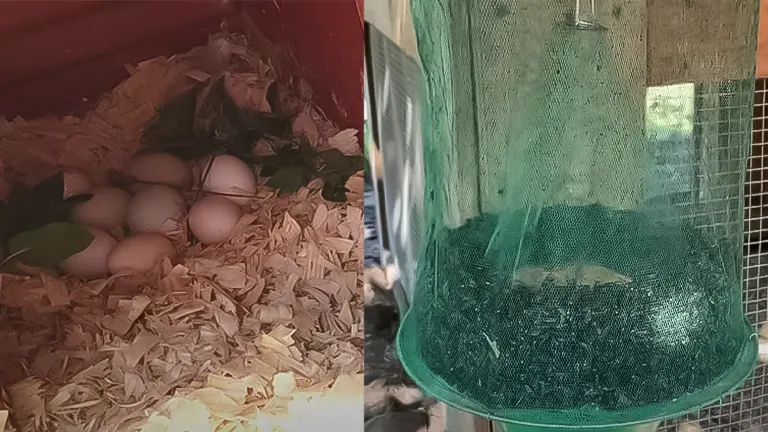
Facing this challenge directly, I have developed and refined a series of effective strategies aimed at minimizing the fly population in and around my chicken coop. My efforts have transformed a situation that was once a constant source of frustration into a serene and healthy environment for my chickens. I am enthusiastic about sharing the tactics and insights I’ve gained through this process, hoping to help others create their own fly-free zones and ensure their coops are havens of tranquility and health for their poultry.
List on How To Control Flies In Your Chicken Coop:
- Maintaining a Clean Coop
- Proper Ventilation
- Natural Predators Guard
- Fly Traps and Repellents
- Diatomaceous Earth
- Feed and Water Management
- Herbal Bedding Additives
Grasping the Nature of Our Adversary
To effectively combat the issue of flies within the chicken coop, it’s imperative to first acknowledge the root cause of their attraction. Flies have a natural inclination towards environments that provide them with moist, decaying organic materials as breeding sites.
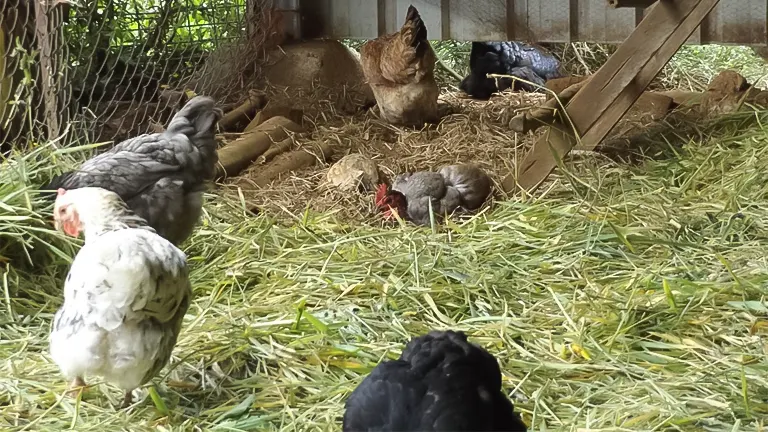
Within the confines of a chicken coop, such conditions are abundantly supplied by the accumulation of chicken droppings, leftovers of feed that go uneaten, and the damp, decomposing bedding material. This combination of elements creates an ideal habitat for flies, offering them ample opportunities to multiply rapidly.
Without diligent management and intervention, these seemingly benign conditions can escalate, transforming the chicken coop into an active fly breeding haven, thereby exacerbating the problem and making control efforts more challenging.
1. Maintaining a Clean Coop
The cornerstone of my strategy for managing the fly population was the implementation of a strict cleanliness regimen within the chicken coop. This approach included the daily removal of chicken waste and the prompt disposal of any spoiled bedding to ensure the coop’s floor remained both dry and free from organic debris.
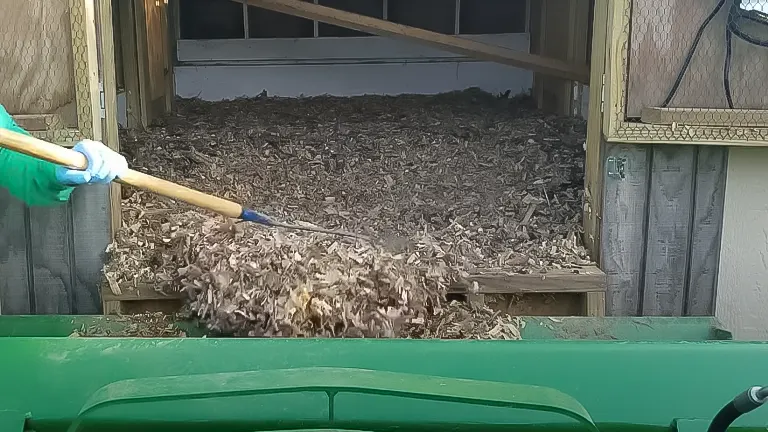
Such meticulous attention to cleanliness served a dual purpose: it was critical in diminishing the fly population by removing potential breeding grounds and played a vital role in enhancing the overall health of my chickens. A clean and well-maintained environment is synonymous with a healthy living space, leading to happier, more content chickens that are less prone to stress and disease, thus promoting an atmosphere of well-being and productivity within the coop.
In addition to waste removal, I found that regularly changing the bedding and performing deep cleanings on a scheduled basis further reduced the likelihood of fly infestation. These practices prevented the accumulation of ammonia and moisture, which are attractive to flies, and ensured that the coop remained a hostile environment for pests. By keeping the coop in pristine condition, I not only safeguarded the health of my flock but also enhanced their living conditions, making the coop a more pleasant and stress-free environment for the chickens to reside in.
2. Proper Ventilation
Introducing proper ventilation into the chicken coop was transformative in my ongoing battle against flies. Adequate airflow is essential for maintaining a dry and healthy environment, thus counteracting the damp conditions that flies find appealing. I strategically installed additional vents to facilitate optimal air circulation, ensuring a consistent cross-flow that kept the interior atmosphere of the coop dry and well-regulated.
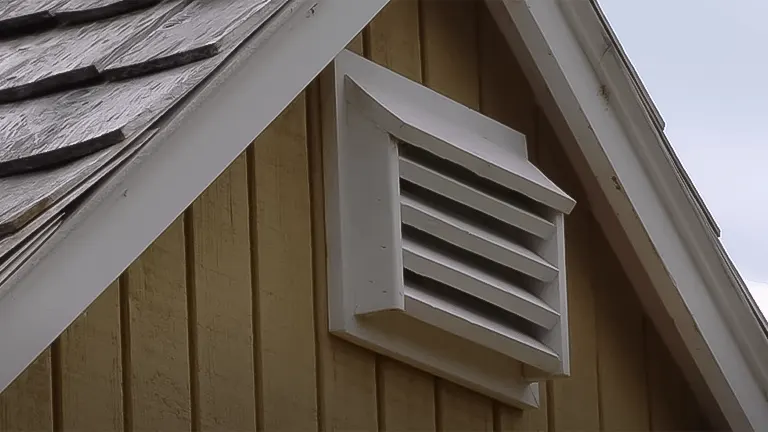
This ventilation not only played a key role in preventing fly infestations but also significantly improved the living conditions for my chickens by maintaining a comfortable temperature and ensuring good air quality.
The benefits of proper ventilation extended beyond just pest control. It also reduced the buildup of harmful gases, such as ammonia, from chicken waste, contributing to a safer and healthier environment for the flock. By prioritizing good ventilation, I was able to create a more sustainable and pleasant living space for my chickens, where fresh air circulated freely, minimizing stress and promoting overall well-being among the birds.
3. Natural Predators Guard
Employing natural fly predators in the coop’s ecosystem marked a pivotal strategy in my eco-friendly approach to controlling flies. These beneficial insects, though small and unobtrusive, play a crucial role in targeting and reducing the fly population at its source by feeding on fly larvae.

This method of biological control was like mobilizing a tiny, environmentally conscious army, offering a direct attack on the fly problem without introducing harmful chemicals into the chickens’ living environment. Over time, this sustainable approach proved to be highly effective, significantly diminishing the number of flies in and around the coop.
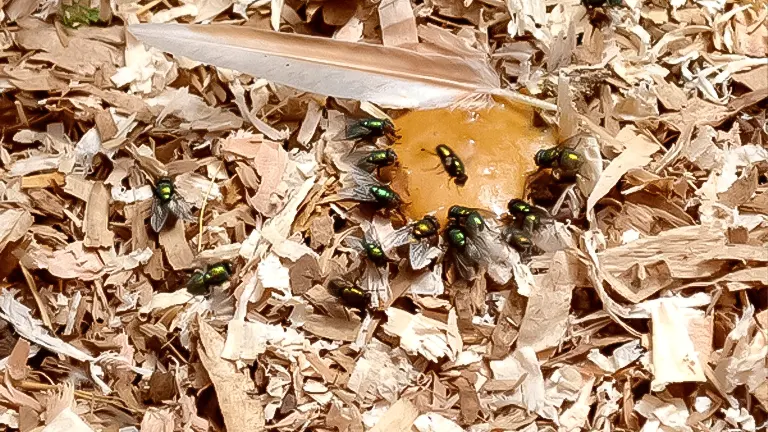
The introduction of natural predators is not only a testament to the power of biological pest control but also aligns with a holistic approach to managing the coop environment. By harnessing the natural lifecycle and predation patterns of these insects, I was able to maintain a balance within the ecosystem, reducing reliance on chemical treatments and fostering a healthier, more natural habitat for my chickens.
4. Fly Traps and Repellents
Incorporating both DIY and commercial fly traps became a fundamental aspect of my integrated pest management strategy. Strategically placed around the coop and run, especially in areas with pronounced fly activity, these traps effectively reduced the adult fly population.
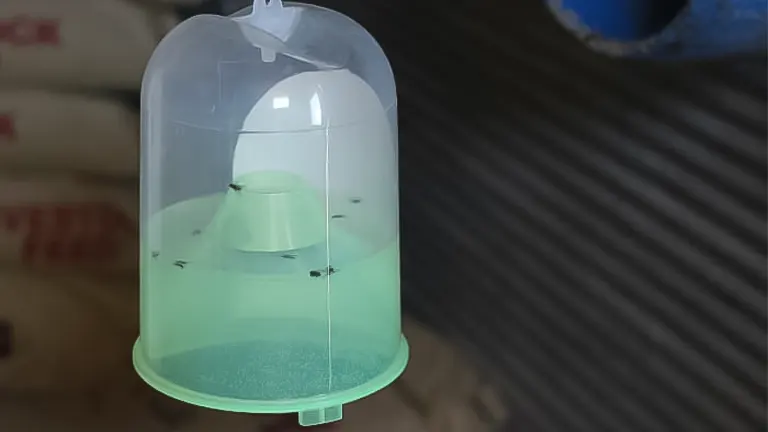
Complementing the mechanical trapping, I experimented with natural repellents, including herbs such as lavender, mint, and basil, along with essential oils. These natural deterrents proved effective in repelling flies while ensuring the safety and health of my chickens, offering a preferable alternative to chemical repellents which could potentially introduce toxins into their environment.
The combined use of traps and natural repellents created a multi-layered defense against flies, addressing both adult and potential future populations. This approach not only helped in significantly lowering the number of flies in the coop but also contributed to a more pleasant living environment for the chickens, free from the annoyance and health risks posed by flies. Through trial and error, I identified the most effective combinations of traps and repellents, customizing my strategy to meet the unique needs of my coop and flock.
5. Diatomaceous Earth
Incorporating food-grade diatomaceous earth into the bedding was another tactic I employed. This naturally occurring, non-toxic powder assists in drying out chicken manure more swiftly, which in turn discourages flies from laying eggs.
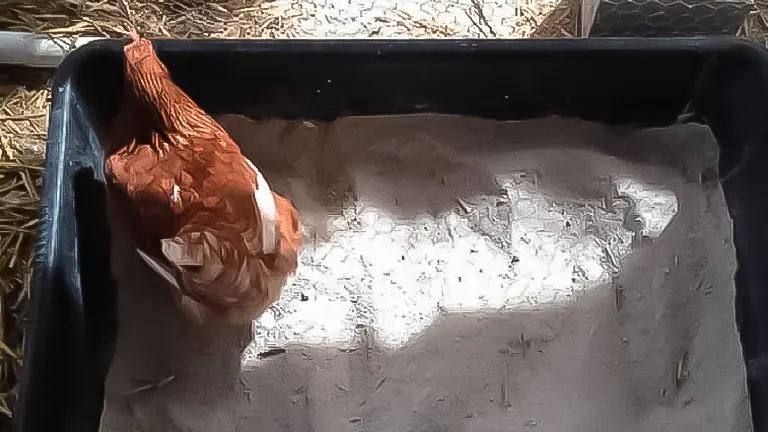
The use of diatomaceous earth as part of my regular cleaning routine emerged as an effective method for pest control, contributing to a drier, less hospitable environment for flies without introducing harmful substances into the chickens’ living space.
6. Feed and Water Management
The application of food-grade diatomaceous earth into the coop’s bedding emerged as a key tactic in my pest control arsenal. This naturally occurring, non-toxic substance aids in quickly drying out chicken manure, thus deterring flies from laying eggs. Regular incorporation of diatomaceous earth into my cleaning routine proved to be an effective measure for controlling pests, contributing to a drier and less hospitable environment for flies without introducing harmful chemicals into the chickens’ habitat.
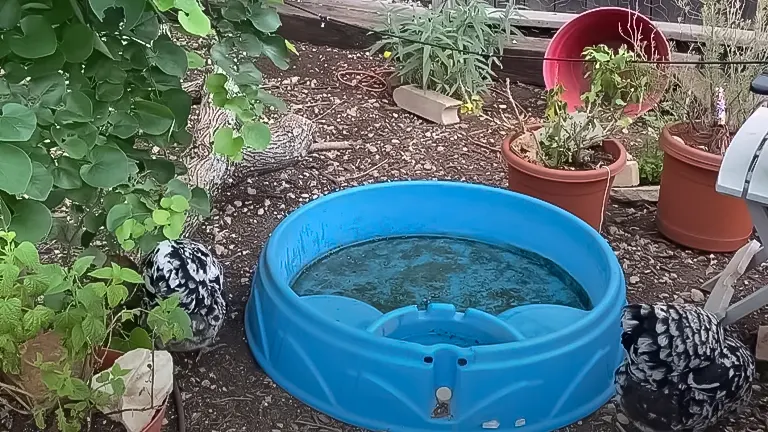
Beyond its immediate impact on fly control, diatomaceous earth also offered benefits in terms of hygiene and health within the coop. By absorbing moisture and reducing odor, it contributed to a cleaner and more comfortable environment for the chickens. Its non-toxic nature ensured that it was safe for use around poultry, making it
7. Herbal Bedding Additives
The integration of specific herbs such as eucalyptus, lemongrass, and citronella into the chicken coop’s bedding marked a significant enhancement in my approach to managing the coop environment. These particular herbs were chosen for their natural fly-repellent properties, which proved to be highly effective in reducing the fly population around the coop. Beyond the practical benefit of pest control, these herbs also contributed to creating a more pleasant living space for the chickens.
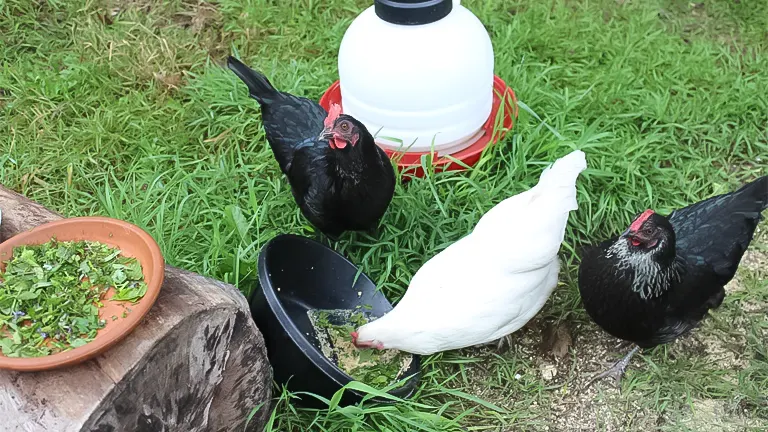
The aromatic qualities of eucalyptus, lemongrass, and citronella enriched the coop’s atmosphere with refreshing scents, helping to neutralize the odors typically associated with poultry housing and thereby contributing to a cleaner-smelling environment. This not only made the coop more enjoyable for me to work in but also enhanced the overall quality of life for the chickens by providing them with a fresher, more aromatic habitat.
Additionally, the use of herbal bedding additives had a noticeably calming effect on the chickens. The natural fragrances of these herbs are known for their soothing properties, which seemed to promote a sense of tranquility and well-being among the flock. This unexpected benefit highlighted the holistic advantages of incorporating natural elements into animal care practices. By creating a more serene environment, the herbs helped to reduce stress levels within the coop, which is crucial for maintaining healthy, productive chickens.
Related Articles:
- Best Bedding For Chickens
- Best Safe Chicken Coop Heater
- 8×8 Chicken Coop Plans
- Turning a Shed Into a Chicken Coop
- How to Make a Chicken Coop Out of Pallets
- Best Sand for Chicken Coop
- How To Insulate a Chicken Coop
- How To Heat a Chicken Coop
- How To Keep Water from Freezing in Chicken Coop
- How to Build a Chicken Coop
- How To Build Chicken Nesting Boxes
- How to Raise Happy and Healthy Chickens in Your Backyard
- When Can Chicks Go Outside? Timing and Tips for a Smooth Transition
- 12 Reasons why Ducks are Better than Chickens
- Best Automatic Chicken Coop Doors 2024: Expert Reviews & Buyer’s Guide
- Best Fans for Chicken Coop 2024: Effective Cooling Solutions Reviewed
Final Conclusion
In conclusion, my holistic approach to managing flies in the chicken coop through meticulous cleanliness, strategic ventilation, the introduction of natural predators, the use of fly traps and repellents, incorporation of diatomaceous earth, careful feed and water management, and the innovative addition of herbal bedding additives has proven to be highly effective. This multifaceted strategy not only significantly reduced the fly population, thereby enhancing the health and comfort of my chickens, but also transformed the coop into a more pleasant and sustainable environment.
By integrating both traditional practices and natural remedies, I’ve been able to create a harmonious living space for my poultry, demonstrating that effective pest control is achievable through eco-friendly and health-conscious methods. This experience underscores the importance of a proactive and integrated approach to chicken coop management, ensuring the well-being of the flock while maintaining an ecological balance within their habitat.
Frequently Asked Questions
- Why are flies a problem in chicken coops?
Flies are not only a nuisance but also pose health risks to chickens by potentially spreading diseases and causing stress. Their presence can degrade the quality of life for your poultry and create an unpleasant environment for both the chickens and their keepers. - What attracts flies to chicken coops?
Flies are attracted to moist, decaying organic matter such as chicken droppings, uneaten feed, and damp bedding. These conditions provide perfect breeding grounds for flies if not properly managed. - How often should I clean the coop to control flies?
Regular cleaning is essential; daily removal of waste and spoiled bedding is recommended. A thorough cleaning, including changing the bedding and scrubbing the coop, should be performed at least once a week to prevent fly infestations. - Can ventilation help in reducing fly problems?
Yes, proper ventilation is crucial for controlling flies. It helps to keep the coop dry, reducing the moist conditions that attract flies. Ensure your coop has adequate airflow to mitigate these conditions. - What are natural fly predators, and how do they help?
Natural fly predators are beneficial insects that feed on fly larvae. Introducing these predators into your coop environment can significantly reduce the fly population by interrupting the flies’ life cycle. - What kind of fly traps are most effective for chicken coops?
Both DIY and commercial fly traps can be effective. Position traps strategically around the coop and run, focusing on areas with high fly activity. Experiment to find the best solution for your specific situation. - How do natural repellents work against flies in the coop?
Natural repellents, including herbs like lavender, mint, and basil, as well as essential oils, can deter flies without harming the chickens. These repellents provide a chemical-free option for reducing fly populations. - What role does diatomaceous earth play in controlling flies?
Food-grade diatomaceous earth can be sprinkled in the bedding to dry out manure faster and deter flies from laying eggs. It’s a natural and non-toxic method that helps in reducing the fly population. - How does feed and water management affect fly control?
Proper management of feed and water can minimize spillage and spoilage, reducing attractants for flies. Use covered feeders and waterers to keep the coop cleaner and less appealing to flies. - Can adding herbs to the coop’s bedding really help control flies?
Yes, adding herbs like eucalyptus, lemongrass, and citronella to the coop’s bedding can act as natural fly repellents. Besides reducing fly presence, these herbs can also make the coop smell fresher and have a calming effect on the chickens.
We’re eager to hear from you! Share your personal experiences and insights on controlling flies in your chicken coop in the comments section below. Your strategies and tips could greatly benefit fellow poultry enthusiasts in creating a healthier, fly-free environment for their flocks. Let’s help each other make informed decisions and foster thriving poultry communities!

Edward Smith
Forestry AuthorWoodworking is about more than crafting; it's a harmonious connection with nature, mastering tools, and preserving our environment. I'm here to share my knowledge and experiences with you, forging a future where we can embrace wood's beauty and utility while safeguarding our forests' health and diversity.

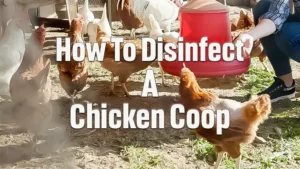


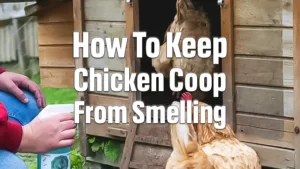








When cleaning the coop what do we do with the waste?
Jean-Pierre Cante
February 9, 2024 6:26 am